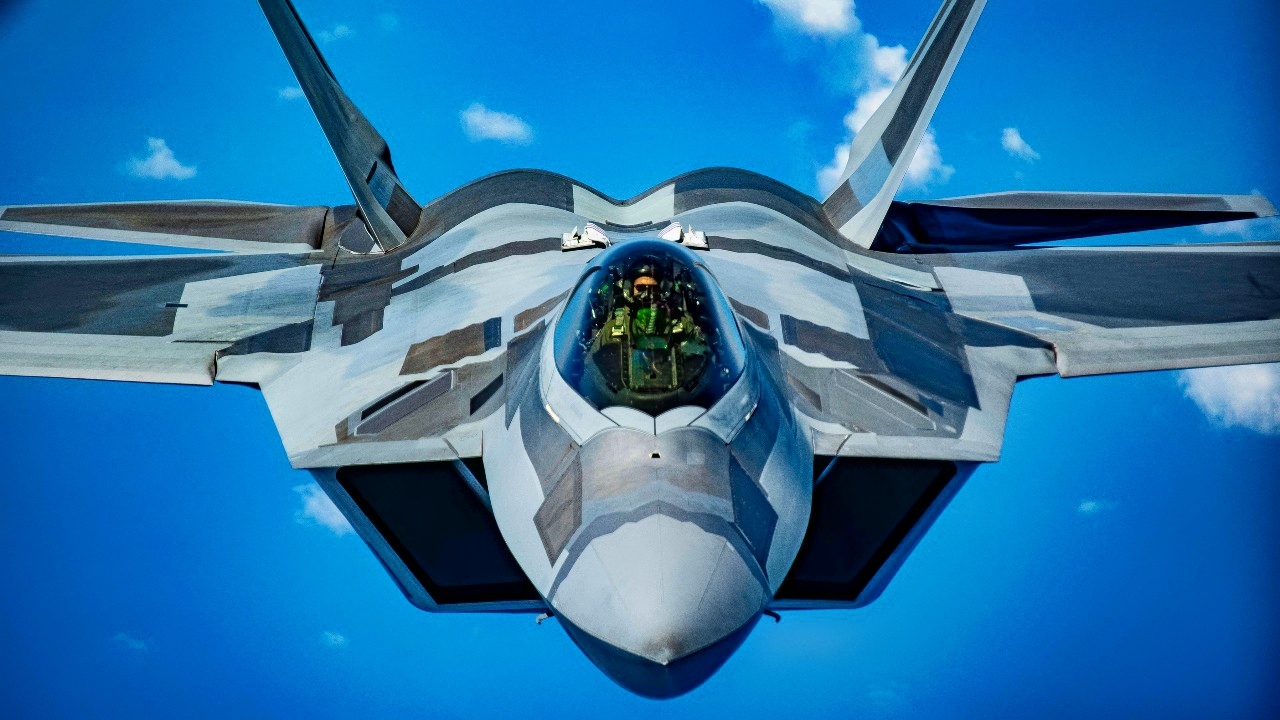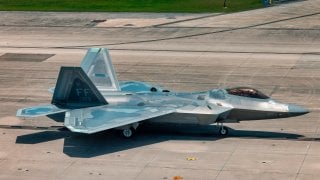The F-22 Raptor Fighter Is Getting Infused with NGAD 'DNA'
The U.S. Air Force is investing heavily in upgrading its Lockheed Martin F-22 Raptors fleet, with a recent $1 billion contract awarded to RTX Raytheon for sensor enhancements.
Summary and Key Points: The U.S. Air Force is investing heavily in upgrading its Lockheed Martin F-22 Raptors fleet, with a recent $1 billion contract awarded to RTX Raytheon for sensor enhancements.
-These upgrades, part of a broader $7.8 billion modernization effort, are crucial for maintaining the F-22's air superiority into the 2030s, particularly in the Indo-Pacific region.
-While 32 older Block 20 Raptors are set for retirement, the remaining 154 will receive these updates.
-The enhancements will also support the development of the Next Generation Air Dominance (NGAD) program, as some technologies tested on the F-22 may be used in future systems.
It Will be Costly to Keep the F-22 Raptor Flying Into the 2030s
The United States Air Force's Lockheed Martin F-22 Raptors air superiority fighters will soon have "sharper claws" – in the proverbial sense. The service has awarded RTX Raytheon a contract valued at more than $1 billion for a sensor upgrade on the fifth-generation fighters.
"[The] fixed-price incentive (firm-target),undefinitized contract for Group B hardware, spares, and support equipment. This contract provides for the F-22 sensor enhancements program that is designed to improve the F-22 sensor capabilities. Work will be performed in McKinney, Texas, and is expected to be completed by May 8, 2029," the U.S. Department of Defense (DoD) contract announcement stated, adding, "The Air Force Life Cycle Management Center, Wright Patterson Air Force Base, Ohio, is the contracting activity."
This upgrade is just part of a larger U.S. Air Force effort to enhance the capabilities of the F-22, and according to a report from ShephardMedia, "will require $7.8 billion in investments before 2020… the modernisation roadmap for the stealth fighter will also include improved connectivity and weapons, new cryptography, an expanded open architecture and an advanced threat warning receiver to make the aircraft fitter for more years in service, particularly in the Indo-Pacific Command area."
Currently, the Air Force has called for the retirement of 32 of the older Block 20 Raptors – which have been deemed not combat-capable – while the remaining 154 F-22s in the fleet will receive the upgrades. The upgrades are considered necessary for the Raptor to retain its edge over those of potential adversaries.
"The F-22 team is working really hard on executing a modernization roadmap to field advanced sensors, connectivity, weapons, and other capabilities," Air Force Brigadier General Jason Voorheis, program executive officer for Fighters and Advanced Aircraft at the AFLCMC, told reporters during a press briefing last month.
F-22 as a Test Bed for NGAD
U.S. Air Force officials had called for the retiring of the old Raptors so that the money to modernize those jets could be better spent on the service's Next Generation Air Dominance (NGAD) program. NGAD is more than a single aircraft and is actually a system of systems that seeks to develop a sixth-generation manned fighter and a planned fleet of drone wingmen.

Some of the money invested in the F-22 Raptor upgrade will also aid the NGAD – as the RTX Raytheon sensors will be part of the air service's rapid prototyping and commissioning process, and could be employed on the NGAD systems.
"The Raptor team recently conducted six flight tests to demonstrate and evaluate the F-22's advanced sensors necessary to complete ongoing MTA (Middle Tier of Acquisition) rapid prototyping for the program," added Voorheis.
Though the DoD didn't specify what the RTX Raytheon contract would include, there is speculation it could include the latest Infrared Search & Track (IRST) sensors that were confirmed in the fiscal year 2025 (FY25) budget request for the Raptor.
Author Experience and Expertise: Peter Suciu
Peter Suciu is a Michigan-based writer. He has contributed to more than four dozen magazines, newspapers, and websites with over 3,200 published pieces over a twenty-year career in journalism. He regularly writes about military hardware, firearms history, cybersecurity, politics, and international affairs. Peter is also a Contributing Writer for Forbes and Clearance Jobs. You can follow him on Twitter: @PeterSuciu. You can email the author: [email protected].
Image Credit: Creative Commons.


